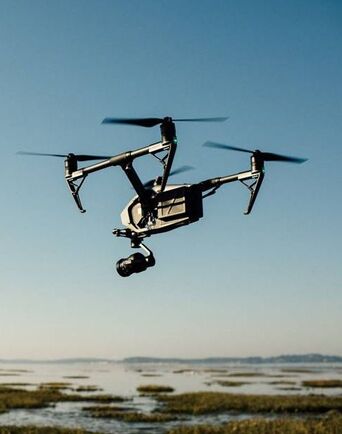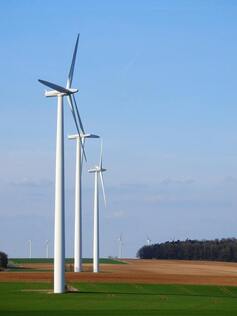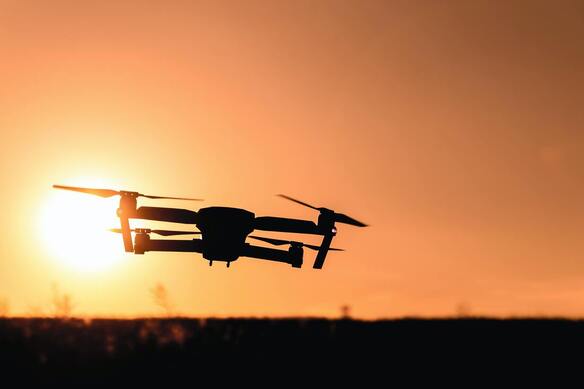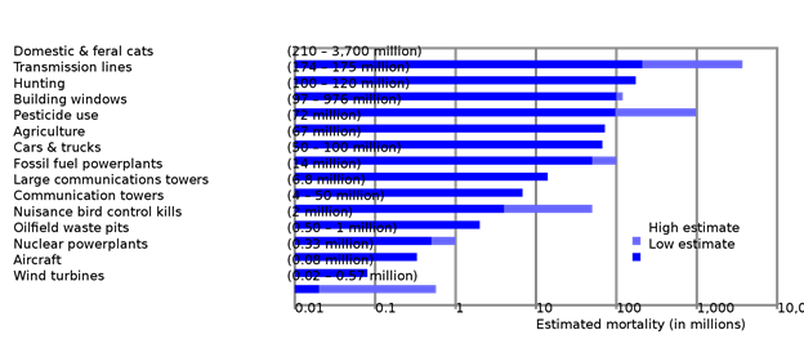 The Federal Aviation Administration is monitoring the security risks posed by drones as their use continues to increase, with the agency expecting $9 billion in drone sales by 2024. As of January 2021, there were 1,782,479 drones registered in the United States by the FAA. 27% of registrations (522,645) were for commercial operation. That population is expected to reach 3.5 million drones by the year 2024! For a sense of the sheer magnitude of this population, compare it to some of the well-known raptors found across North America. At 2.3 Million estimated individuals, Red-tailed Hawks (Buteo jamaicensis) are the most numerous on our list, with Osprey (Pandion haliaetus), Golden Eagles (Aquila chrysaetos) and Bald Eagles (Haliaeetus leucocephalus) making up the rest of our tally with 500,000, 300,000 and 250,000 estimated individuals, respectively. Adding up these estimates into a combined total gives us 3.35 Million estimated raptors. A full 200,000 individuals shy of the FAAs drone estimate. Of course, not all those drones will be in the air at the same time, but we can probably assume at least 15% of them can be airborne at some point during an average day. That means that currently, an estimated 165,000 drones could be airborne at some point on the day you are reading this article. With Covid-19 essentially changing the way we do everything the talk and even development of drone delivery services by Amazon exist and is not slowing down in momentum and development. What does a significant increase in drone use mean for your facility? Increase presence around airports, invasions of privacy, security risks, the list goes on and on. In today’s ultra-modern, highspeed atmosphere, the ability to adequately secure an area is more difficult than ever, and one common breach of security is using drones. Now, the word Security may evoke thoughts of people in uniform physically securing an event, such as a sporting event or VIP event in a city center, but it can also mean a private residence, where an average homeowner may want to make sure that no one is spying on them and theirs by unscrupulous folks down the street. Whatever the case may be, the ability to unequivocally know that any area of interest is secure is a necessary evil in today’s world. But as events like the December 2018 disruption of service at London Gatwick Airport have shown, education and deterrence are not enough — and a single clueless or nefarious drone operator can have an outsized impact. That incident resulted in a loss of $25-60 million in revenue for airports and airlines, according to Justin Barkowski, vice president for regulatory affairs at the American Association of Airport Executives, and 160,000 people missed flights. Investigators never determined who was responsible for the threat. (read story) Today, there are more than 530 counter-drone systems on the market, according to the Center for the Study of the Drone at Bard College, with detection methods including radar, radio frequency (RF), eletro-optical and infrared imaging and acoustics. Interdiction methods are various as well, but there is little clarity among industry, government agencies and even the military what systems are most effective for various circumstances. Here are some crucial things airport operators will need to consider with the growth of drone numbers or if you are looking into implementing a counter-drone system.
If you are having trouble implementing or picking a counter drone technique or product fill out the fields below and someone from Loomacres Wildlife Management will reach out to you shortly.
1 Comment
 As the demand for energy grows nationwide, so does renewable energy sources being relied on to fill the need. The Department of Energy has a goal of wind energy producing 20% of the nation’s total energy demand by 2030. Environmental assessments are routinely carried out for wind farm proposals, and potential impacts on the local environment (e.g., plants, animals, soils) are evaluated. Turbine locations and operations are often modified as part of the approval process to avoid or minimize impacts on threatened species and their habitats. Any unavoidable impacts can be offset with conservation improvements of similar ecosystems which are unaffected by the proposal. Am I the only one that drives through the Midwest looking at these giant wind farms and wind turbines that are moving at a snail’s pace and wonder “How can birds or bats not get out of the way”? Protestors and environmental groups always bring up the dangers of Wind Turbines and the impact they have on avian mortality but what do the numbers say and do Wind Farms need to employ Wildlife Management Tactics? First let us look at why this happens in the first place.
The USFWS (U.S. Fish and Wildlife Service) estimated that Over 200 species of bird have been documented as killed by collision with wind turbines. Passerines (i.e., songbirds) are most commonly reported, followed by raptors that hunt by day such as hawks, eagles and falcons. Although fatality rates for raptors may be lower compared to passerines, raptors are especially vulnerable to collisions due to their flight behaviors. Given the life history traits of raptors (i.e., long-lived, and low reproductive rates) their populations are more at risk of decline from the number of different sources of impacts that affect these species daily. So where do wind turbines stack up compared to other causes of bird mortality? Check out this graph of data provided by B. Sovacool. To cut down the mortality rates as well as the damage caused by wildlife to wind turbines here are a few Wildlife Management techniques that could be used to do so.
For more information about Wildlife Management Strategies please fill out the contact fields below and someone from Loomacres Wildlife Management will reach out to you soon. |
Sales & Marketing
|


 RSS Feed
RSS Feed